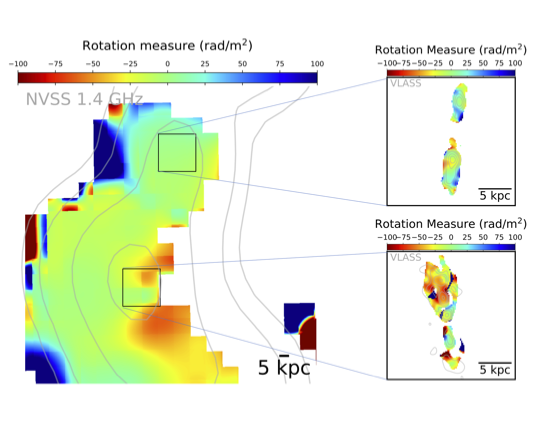Faraday Tomography of the Magnetic Sky
The VLA Wideband Interferometric Digital Architecture Correlator (WIDAR) has opened a major new window for wideband polarization observations, enabling scientists to characterize properties of the magneto-ionic medium in Active Galactic Nuclei (AGNs), and in galaxies across a wide range of redshifts, both directly from their broadband polarized emission, and when seen against polarized background sources. The increase in the sensitivity and the wideband capability of the VLASS yields a six-fold increase in the density of polarized sources with reliable Faraday rotation compared to what is available today.
Polarization studies with VLASS will resolve the Faraday screens around radio-emitting AGN (Figure 1), allowing the study of the interaction of radio jets with their surroundings. The effects of the magneto-ionic media in quasar absorption line systems will be studied by examining the polarization properties of the background quasars, a technique that can also be expanded to gravitationally lensed systems, where multiple lines of sight can probe a single galaxy. The high density of polarized sources will be used to improve our understanding of the magnetic field in the Milky Way.

Figure 1: Faraday rotation in the radio galaxies 3C402A and 3C402B; on the left, the rotation measure image from NVSS data, on the right the two radio galaxies in VLASS. Note that the resolution of VLASS allows the Faraday screen around the radio galaxies to be resolved, in the NVSS data these screens are averaged over and the residual net Faraday rotation is dominated by the Milky Way (courtesy L. Rudnick).




Connect with NRAO